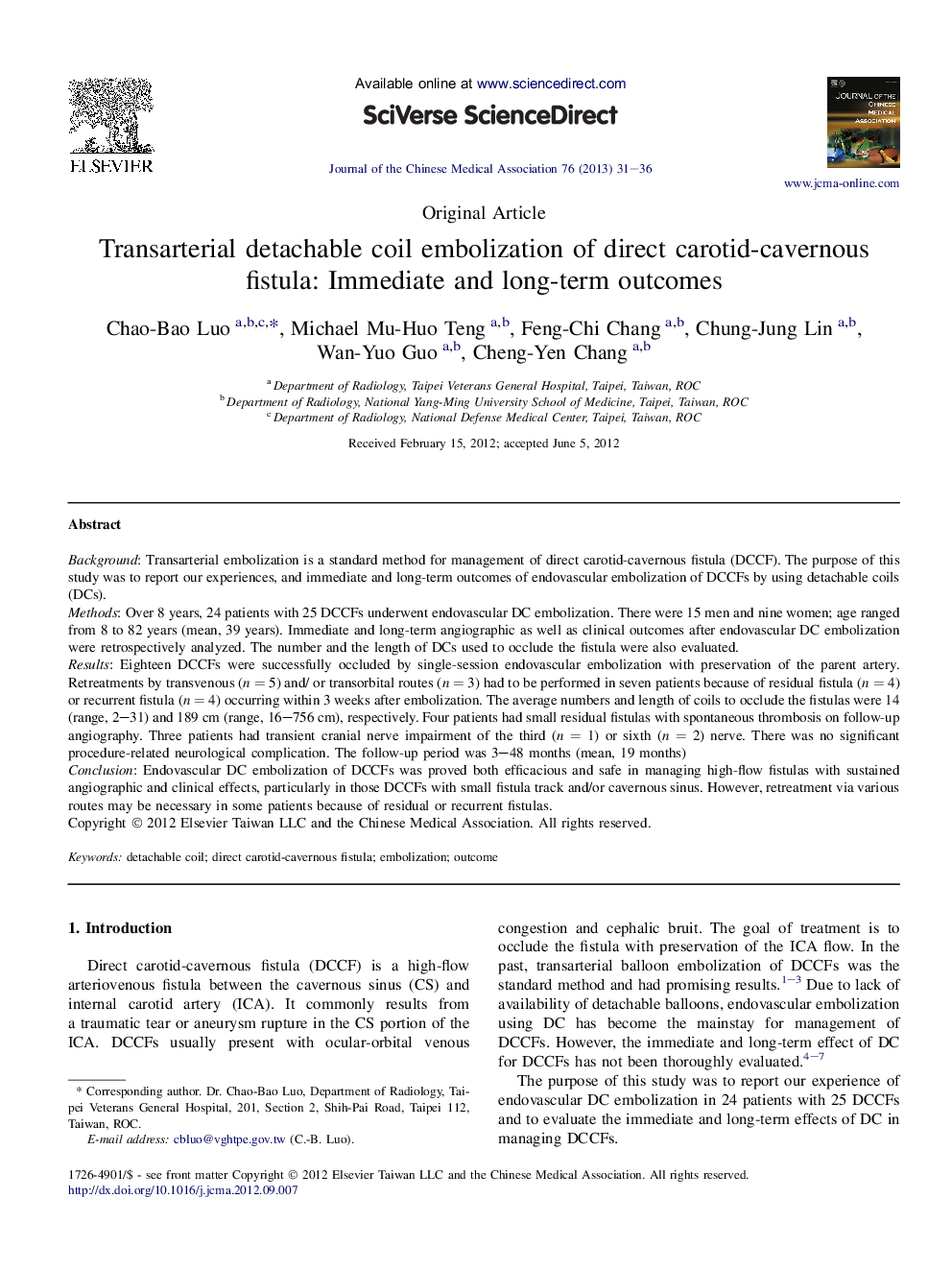| کد مقاله | کد نشریه | سال انتشار | مقاله انگلیسی | نسخه تمام متن |
|---|---|---|---|---|
| 3476778 | 1233281 | 2013 | 6 صفحه PDF | دانلود رایگان |

BackgroundTransarterial embolization is a standard method for management of direct carotid-cavernous fistula (DCCF). The purpose of this study was to report our experiences, and immediate and long-term outcomes of endovascular embolization of DCCFs by using detachable coils (DCs).MethodsOver 8 years, 24 patients with 25 DCCFs underwent endovascular DC embolization. There were 15 men and nine women; age ranged from 8 to 82 years (mean, 39 years). Immediate and long-term angiographic as well as clinical outcomes after endovascular DC embolization were retrospectively analyzed. The number and the length of DCs used to occlude the fistula were also evaluated.ResultsEighteen DCCFs were successfully occluded by single-session endovascular embolization with preservation of the parent artery. Retreatments by transvenous (n = 5) and/ or transorbital routes (n = 3) had to be performed in seven patients because of residual fistula (n = 4) or recurrent fistula (n = 4) occurring within 3 weeks after embolization. The average numbers and length of coils to occlude the fistulas were 14 (range, 2–31) and 189 cm (range, 16–756 cm), respectively. Four patients had small residual fistulas with spontaneous thrombosis on follow-up angiography. Three patients had transient cranial nerve impairment of the third (n = 1) or sixth (n = 2) nerve. There was no significant procedure-related neurological complication. The follow-up period was 3–48 months (mean, 19 months)ConclusionEndovascular DC embolization of DCCFs was proved both efficacious and safe in managing high-flow fistulas with sustained angiographic and clinical effects, particularly in those DCCFs with small fistula track and/or cavernous sinus. However, retreatment via various routes may be necessary in some patients because of residual or recurrent fistulas.
Journal: Journal of the Chinese Medical Association - Volume 76, Issue 1, January 2013, Pages 31–36